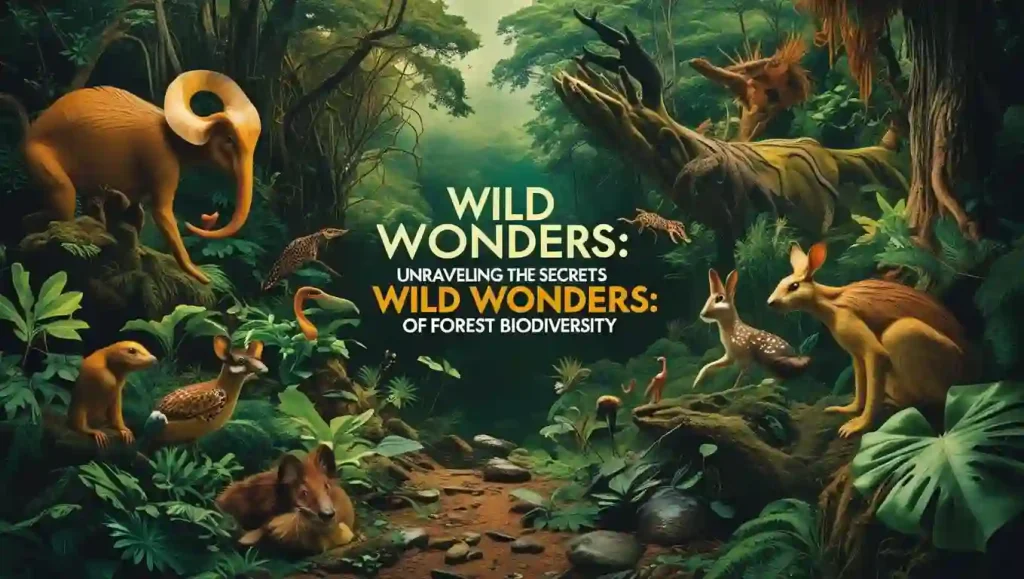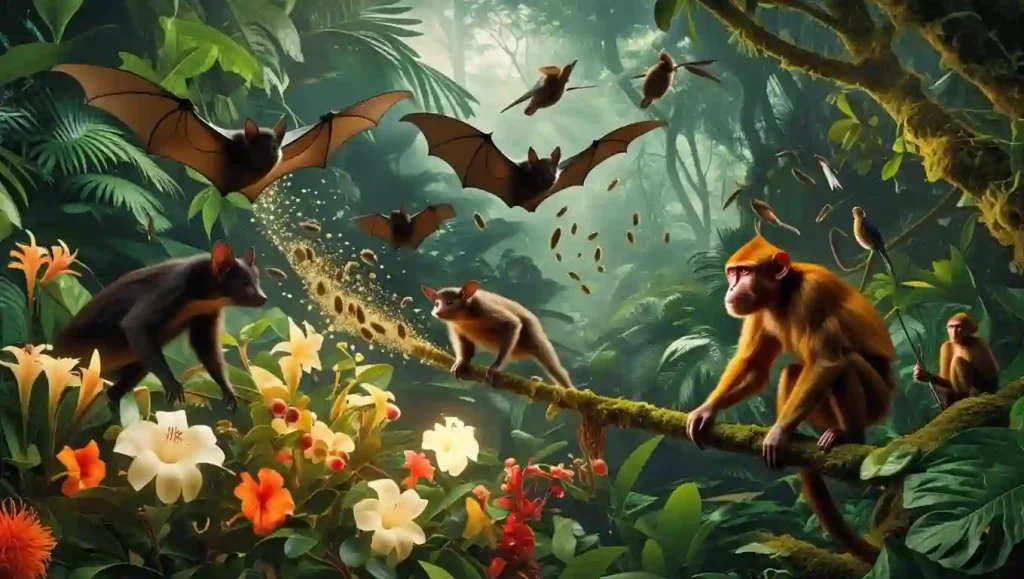
Imagine stepping into a forest where every leaf, chirp, and rustle tells a story of life intertwined. From towering trees to microscopic fungi, forests are vibrant hubs of biodiversity, teeming with species that create a delicate balance. This is the magic of forest biodiversity—the variety of life forms that make forests some of the most vital ecosystems on Earth. But what exactly is forest biodiversity, and why should we care? In this article, we’ll explore its importance, uncover its hidden secrets, examine the threats it faces, and share practical ways to protect it. Ready to dive into the wild wonders of forests?
What Is Forest Biodiversity?
Forest biodiversity refers to the rich variety of life within forest ecosystems, encompassing plants, animals, fungi, and microorganisms. It’s not just about the number of species but also their interactions and roles in maintaining a healthy ecosystem. The World Wildlife Fund (WWF) estimates that forests, including ecosystems like the Amazon and Canada’s boreal regions, support around 80% of all terrestrial life on Earth.
Think of a forest as a bustling city: trees provide shelter, animals pollinate or disperse seeds, and microbes enrich the soil. Each and every species holds significance, however small it may be. For example, in tropical rainforests, colorful macaws spread seeds, while in temperate forests, wolves regulate prey populations, ensuring balance. This intricate web is what makes forest biodiversity so remarkable.
Why Is Forest Biodiversity Important?
Forest biodiversity isn’t just a marvel to behold—it’s essential for life on Earth. Let’s break down its key benefits:
Ecological Benefits
Often called the lungs of the planet, forests rely on their biodiversity to stay healthy and vibrant. Diverse plant species absorb carbon dioxide, helping regulate climate change. According to a 2020 study in Nature, forests with higher biodiversity store up to 30% more carbon than less diverse ones. Pollinators like bees and butterflies ensure plants reproduce, while decomposers like fungi recycle nutrients, keeping soils fertile. Without this diversity, ecosystems would collapse like a house of cards.
Economic and Cultural Value
Forests provide resources that sustain human life.The United Nations states that upwards of 25% of modern pharmaceuticals, such as aspirin (which comes from willow bark), have their roots in forest plants. Forest biodiversity also supports industries like timber, ecotourism, and agriculture. For indigenous communities, forests are sacred, offering food, medicine, and cultural heritage. For instance, the Amazon’s indigenous tribes rely on diverse plant species for traditional healing practices, preserving knowledge passed down for generations.
Secrets of Forest Biodiversity Uncovered
The forest canopy hides a world full of mysteries and natural treasures. Let’s explore some lesser-known secrets of forest biodiversity.
Hidden Species and Their Unique Roles
Countless creatures call forests home—and many have yet to be found by science. In the Amazon, scientists estimate there are millions of insect species, with new ones identified yearly. Take the leafcutter ant: these tiny workers cultivate fungi gardens, contributing to soil health. Or consider mycorrhizal fungi, which form a “wood wide web,” connecting tree roots to share nutrients. These unseen players are vital to forest resilience.
The Interconnected Web of Life

Forest biodiversity thrives on relationships. For example, in North American forests, bats pollinate plants and control insect populations, supporting both flora and fauna. In tropical forests, monkeys and birds disperse seeds, ensuring new trees grow. These connections create a self-sustaining system where every species depends on others, like threads in a tapestry.
Threats to Forest Biodiversity
Despite its importance, forest biodiversity faces severe threats that jeopardize ecosystems and human well-being.
Deforestation and Habitat Loss
Deforestation is the biggest culprit, with 10 million hectares of forest lost annually, according to the FAO. Logging, agriculture, and urban expansion destroy habitats, pushing species like the orangutan to the brink of extinction. When forests shrink, biodiversity suffers, disrupting food chains and ecosystem services.
Climate Change Impacts
Rising temperatures and shifting weather patterns threaten forest biodiversity. Droughts weaken trees, making them vulnerable to pests like bark beetles, which have devastated North American pine forests. Changing climates also force species to migrate, but many can’t adapt quickly enough, leading to population declines.
How to Protect Forest Biodiversity
The good news? We can take action to preserve forest biodiversity. From global initiatives to individual efforts, every step counts.
Conservation Strategies and Initiatives
Governments and organizations worldwide are stepping up. Programs like REDD+ (Reducing Emissions from Deforestation and Degradation) incentivize forest preservation. Protected areas, such as Costa Rica’s national parks, have boosted biodiversity by restricting logging. Efforts to restore ecosystems are gaining momentum, with reforestation projects like Ethiopia’s planting of 350 million trees in a day leading the way.
What You Can Do to Help
You don’t need to be a scientist to make a difference. Here are practical steps:
- Support Sustainable Products: Choose FSC-certified wood or paper to ensure responsible sourcing.
- Reduce Your Footprint: Cut down on meat consumption, as livestock farming drives deforestation.
- Plant Native Trees: Join local reforestation projects or plant trees in your community.
- Advocate: Support policies and organizations like WWF or Rainforest Foundation that protect forests.
- Educate Others: Share knowledge about forest biodiversity to inspire action.
Fascinating Facts About Forest Biodiversity
Here are some surprising facts to spark your curiosity:
- Forests Host Hidden Worlds: Within a single teaspoon of forest soil lies a microscopic world of thousands of microbial species.
- Biodiversity Boosts Resilience: Diverse forests recover faster from disasters like fires or storms.
- Fungi Are Forest Heroes: Mycorrhizal networks connect up to 80% of plants in some forests.
- Unique Species Thrive: The Borneo rainforest is home to the Rafflesia, a flower that smells like rotting flesh to attract pollinators.
- Forests Support Pollinators: Over 75% of global food crops rely on forest pollinators like bees and bats.
Conclusion
Forest biodiversity is a treasure trove of life, sustaining ecosystems, economies, and cultures. From the intricate roles of hidden species to the global impact of healthy forests, these wild wonders are worth protecting. Yet, threats like deforestation and climate change demand urgent action. By supporting conservation efforts, making sustainable choices, and spreading awareness, we can ensure forests thrive for generations. Join the movement to protect forest biodiversity—share this article, plant a tree, or explore a forest near you. What will you do to preserve these natural wonders?
FAQs
What is forest biodiversity?
Forest biodiversity is the variety of life in forest ecosystems, including plants, animals, fungi, and microorganisms, and their interactions.
Why is forest biodiversity important?
It supports ecosystem stability, climate regulation, and provides resources like food, medicine, and timber.
What are the main threats to forest biodiversity?
Deforestation, habitat loss, climate change, and invasive species are the primary threats.
How can I help protect forest biodiversity?
Support sustainable products, reduce your environmental footprint, plant trees, and advocate for conservation policies.
What is the “wood wide web”?
It’s a network of mycorrhizal fungi connecting tree roots, allowing them to share nutrients and communicate.

